
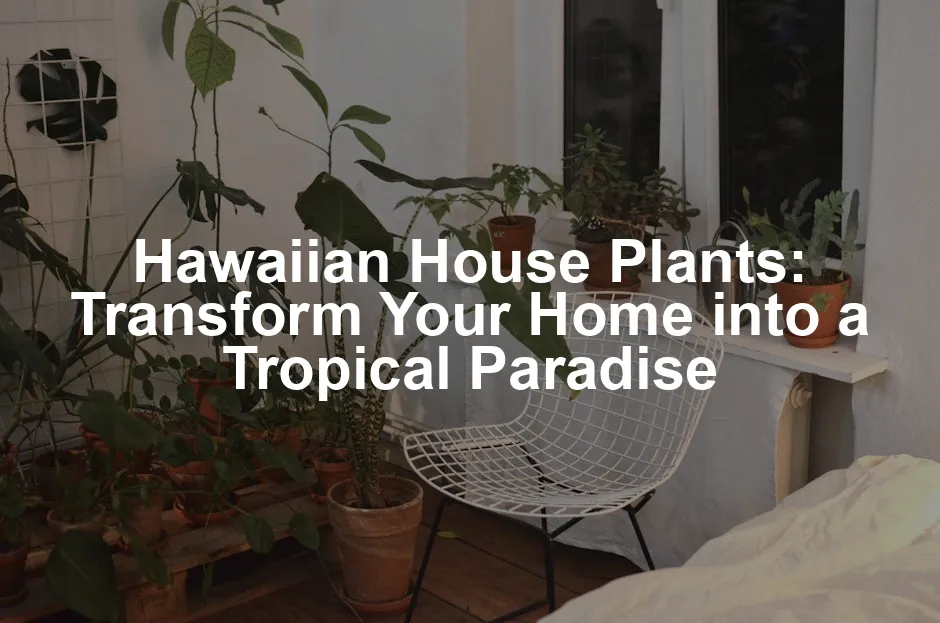
Hawaiian House Plants: Transform Your Home into a Tropical Paradise
Introduction
Hawaiian house plants bring a vibrant touch to your home. Their lush greenery and colorful blooms create an inviting atmosphere. Not only do they enhance your decor, but they also offer numerous health benefits. Studies show that plants can purify the air and reduce stress levels. In this article, we’ll guide you on how to choose and care for these stunning plants.
Summary and Overview
Hawaiian house plants are diverse and beautiful. From the iconic Ti plant to the fragrant Plumeria, there’s a variety for every indoor gardener. These plants hold ecological significance and play a vital role in Hawaiian culture. They symbolize life and harmony, often used in traditional ceremonies. Throughout this article, you can expect tips on selecting the best plants, caring for them, and integrating them into your home decor.
Why Choose Hawaiian House Plants?
Benefits of Hawaiian Plants
Hawaiian plants are a feast for the eyes. Their vibrant colors and unique textures instantly elevate your indoor space. Think lush greens, striking reds, and sunny yellows that brighten any room. Not only do they look great, but they also improve air quality. Research shows that plants can remove toxins and boost oxygen levels in your home. This leads to a fresher environment and can enhance your overall well-being.
Furthermore, being around plants can lift your mood and reduce stress. Studies indicate that indoor greenery contributes to feelings of calm and happiness. Plus, Hawaiian plants adapt well to various indoor conditions, making them perfect for any setting. Whether you live in a bright apartment or a cozy home, these tropical indoor plants can thrive. So, why not consider adding some Hawaiian house plants to your space? Your home will thank you, and so will your mind!

If you’re serious about keeping your plants thriving, why not grab an Indoor Plant Care Guide Book? It’s like having a plant whisperer right in your pocket, ready to help you navigate the ups and downs of indoor gardening.
Popular Hawaiian House Plants
Hawaiian house plants are not just beautiful; they bring a touch of paradise indoors. Let’s look at some popular varieties you can consider for your home.
Hawaiian Ti Plant (Cordyline fruticosa)
The Hawaiian Ti plant is a favorite among many. Its vibrant leaves come in shades of red, pink, and green, creating a striking visual. This plant prefers bright, indirect light and needs regular watering, especially during warmer months. Ensure the soil remains slightly moist but avoid overwatering. The Ti plant can grow up to 6 feet tall, making it an eye-catching centerpiece.
If you’re looking to elevate your home decor, consider adding a Decorative Ceramic Planter. These stylish pots not only house your plants but also add a splash of color and personality to your living space.

Anthurium (Anthurium andraeanum)
Known for its heart-shaped flowers, Anthuriums add elegance to any space. They thrive in humid environments and prefer bright, indirect light. Water them moderately, allowing the top inch of soil to dry out between waterings. With proper care, these plants can bloom year-round, providing vibrant colors that brighten your home.
To ensure your Anthurium thrives, consider investing in a Plant Fertilizer (Balanced Formula). It’s like a multivitamin for your plants, keeping them nourished and vibrant!
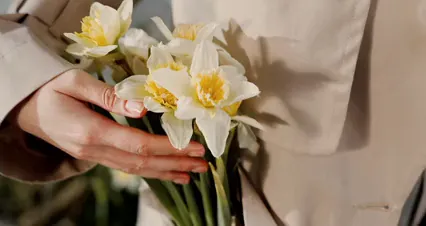
Plumeria (Plumeria spp.)
Plumeria is famous for its fragrant flowers, often associated with Hawaiian leis. These plants require full sun and well-drained soil. Water them sparingly; overwatering can lead to root rot. Plumeria can reach heights of 10 feet or more, making them perfect for outdoor settings in warmer climates.
While you’re at it, consider a Watering Can with Measurement. It’ll help you water your plants accurately, ensuring they get just the right amount of hydration.
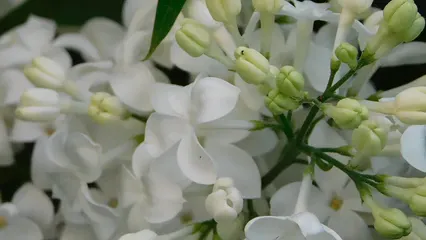
Bird of Paradise (Strelitzia reginae)
The Bird of Paradise plant resembles a colorful bird in flight. It prefers bright light and regular watering, but be cautious not to let it sit in water. This plant can grow up to 5 feet tall and produces stunning orange and blue flowers. They are sure to be a conversation starter in your home.
Hawaiian Umbrella Tree (Schefflera arboricola)
This versatile plant features glossy, umbrella-like leaves. The Hawaiian Umbrella Tree adapts well to various light conditions, from low light to bright, indirect sunlight. Water it when the top inch of soil feels dry. It can grow up to 6 feet indoors, making it ideal for brightening up corners of your space.
To keep your plants happy, consider using a Indoor Plant Humidifier. It ensures that your leafy friends stay hydrated and happy, especially in dry environments.
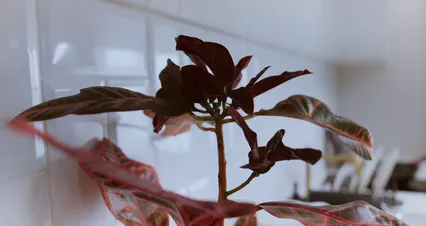
These tropical plants will not only enhance your home decor but also improve air quality. If you’re interested in adding these beauties to your collection, consider visiting local nurseries. You might find unique varieties that suit your style!
Integrating Hawaiian Plants into Your Home Decor
Bringing Hawaiian plants into your home is a fantastic way to create a vibrant, tropical atmosphere. But how do you showcase these beautiful plants effectively? Here are some design tips to help you integrate Hawaiian flora into your decor seamlessly.
Ideal Placements
Start by considering the best spots for your plants. Living rooms benefit greatly from larger plants like the Bird of Paradise, which can serve as a striking focal point. Place it near a bright window for optimal light. Bedrooms are perfect for air-purifying plants like the Hawaiian Umbrella Tree. Its lush foliage promotes a calming environment, making it ideal for relaxation. Bathrooms often have higher humidity, making them an excellent home for moisture-loving plants like Anthurium.
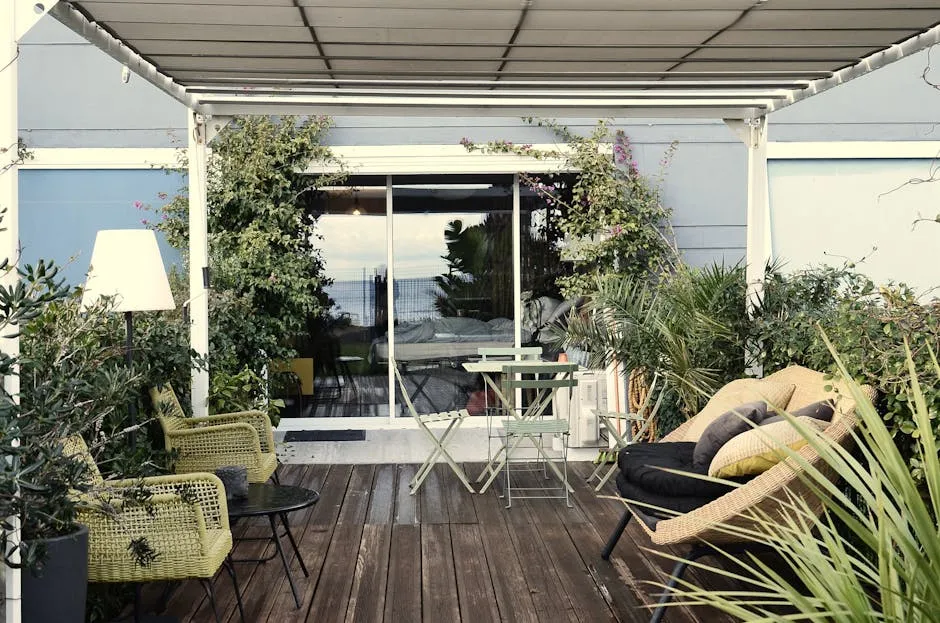
Pairing with Home Aesthetics
Next, think about your home’s aesthetic. For modern spaces, opt for sleek, minimalist pots. A simple white ceramic planter can accentuate the vibrant colors of your plants. If your style leans towards bohemian, don’t hesitate to mix and match different plant varieties in unique pots. This creates an eclectic vibe that feels cozy and inviting. For those who prefer classic decor, consider using elegant planters with single-species arrangements. This approach adds sophistication while highlighting the unique beauty of each plant.
Decorative Pots and Arrangements
Decorative pots can elevate your plant display. Consider vibrant colors or intricate patterns that complement your home’s design. Hanging planters also work wonders, especially for trailing varieties. They draw the eye upward and make the most of vertical space. Arrange smaller plants together on a shelf or tabletop for a curated look. You can even create groupings based on plant height and texture to add visual interest.
Statistics show that indoor plant decor is on the rise, with many homeowners embracing greenery. This trend not only enhances the aesthetic appeal of a space but also contributes to emotional well-being. Plants can reduce stress and boost your mood, making your home a happier place.
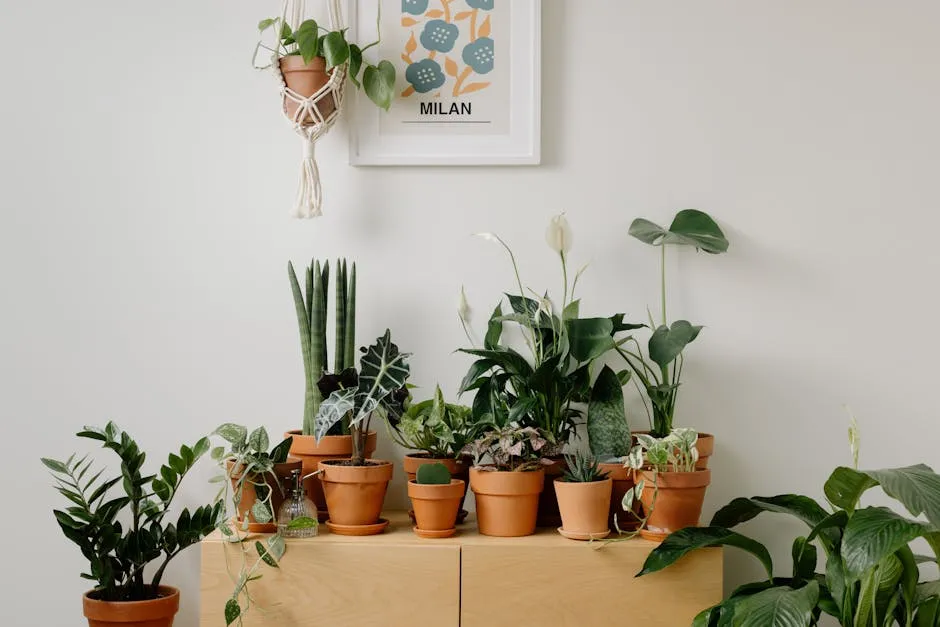
So, how do you plan to integrate Hawaiian plants into your decor? Share your ideas on social media! We’d love to see how you style your indoor tropical paradise.
Common Challenges and Solutions
Troubleshooting Plant Issues
Caring for Hawaiian house plants can be rewarding, but it’s not always easy. You might face some common challenges. Let’s tackle a few of them and their solutions.
One frequent issue is yellowing leaves. This often signals overwatering. Hawaiian plants thrive in well-drained soil. To fix this, allow the top inch of soil to dry out before watering again. Adjust your watering schedule to prevent root rot.
Another concern is a lack of blooms, particularly in flowering plants like Anthurium. This can happen due to insufficient light or nutrients. Ensure your plants receive bright, indirect sunlight. Additionally, consider using a balanced fertilizer during the growing season to encourage blooming.
Pest infestations can also be a headache. Common pests include spider mites and aphids. Regularly inspect your plants for any signs of trouble. If you spot pests, wipe the leaves with a damp cloth. For severe infestations, consider using Organic Insecticidal Soap or neem oil.
Statistics reveal that many plant owners struggle with these issues. In fact, nearly 80% of houseplant enthusiasts report that improper watering is their biggest challenge. By understanding these problems and implementing the right solutions, you can enjoy thriving Hawaiian plants in your home.
If you find that these issues persist, consider consulting local plant experts. They can provide tailored advice and support for your specific situation.
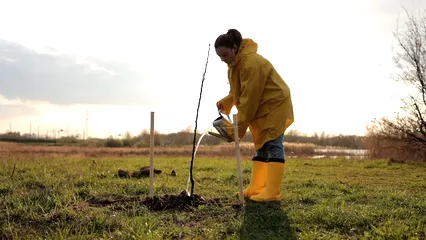
Embracing the Aloha Spirit in Plant Care
The Cultural Connection
Hawaiian plants are more than just beautiful decor; they carry deep cultural significance. For generations, these plants have been part of Hawaiian traditions, symbolizing wellness and harmony. Caring for them can promote tranquility in your home.
In Hawaiian culture, nurturing plants is considered a spiritual practice. It connects individuals with nature and fosters a sense of peace. This connection can enhance your personal well-being. Studies show that gardening can reduce stress and anxiety, contributing to better mental health.
When you care for your Hawaiian plants, you create a calming environment. The lush greenery and vibrant flowers can transform your space into a peaceful sanctuary. Reflecting on your plant care can serve as a form of self-care.
Consider incorporating Hawaiian plants into your daily routine. Whether it’s watering them or simply enjoying their beauty, each moment spent with these plants can foster a deeper connection to nature.

So, take a moment to appreciate the role of Hawaiian flora in your life. Embrace the Aloha spirit through plant care, and watch how it enriches your home and mental wellness.
Conclusion
In this article, we uncovered the beauty and benefits of Hawaiian house plants. These vibrant plants can transform your home into a tropical paradise. They not only enhance your decor but also purify the air and boost your mood. By choosing the right plants and providing proper care, you can create a lush indoor oasis.
Now, it’s your turn to embrace the joy of Hawaiian house plants! Explore local nurseries or online shops to find your favorites. Bring home these exquisite plants and enjoy the tranquility they offer. Make your space a little piece of Hawaii today!
FAQs
Can Hawaiian house plants thrive indoors in non-tropical climates?
Absolutely! Many Hawaiian plants adapt well indoors. Ensure they have good drainage and a well-aerated potting mix. Bright, indirect light is essential too. With consistent watering and attention to humidity, you can successfully grow these indoor tropical plants anywhere.
What are the best light conditions for Hawaiian plants?
Hawaiian plants generally prefer bright, indirect light. However, specific needs vary. For instance, Plumeria loves full sun, while the Hawaiian Ti plant thrives in indirect light. Always assess your plant’s requirements to ensure optimal growth.
How often should I water my Hawaiian house plants?
Watering frequency depends on the plant species. Most Hawaiian plants prefer consistent moisture without being soggy. Check the top inch of soil; if it feels dry, it’s time to water. Adjust your schedule based on the plant’s needs and your home’s humidity.
Are Hawaiian plants safe for pets?
Some Hawaiian plants can be toxic to pets. For example, the Bird of Paradise is harmful if ingested. To keep your furry friends safe, research each plant’s toxicity and opt for pet-friendly varieties when possible.
What’s the best way to fertilize Hawaiian house plants?
Fertilizing schedules vary by plant. During the growing season, use a balanced fertilizer every 4-6 weeks. Pay attention to the specific needs of your plants, as some may require more or less frequent feeding for optimal health.
Please let us know what you think about our content by leaving a comment down below!
Thank you for reading till here 🙂
If you’re interested in enhancing your indoor gardening experience, check out this guide on how to cultivate beautiful orchids for indoor gardening.
All images from Pexels



